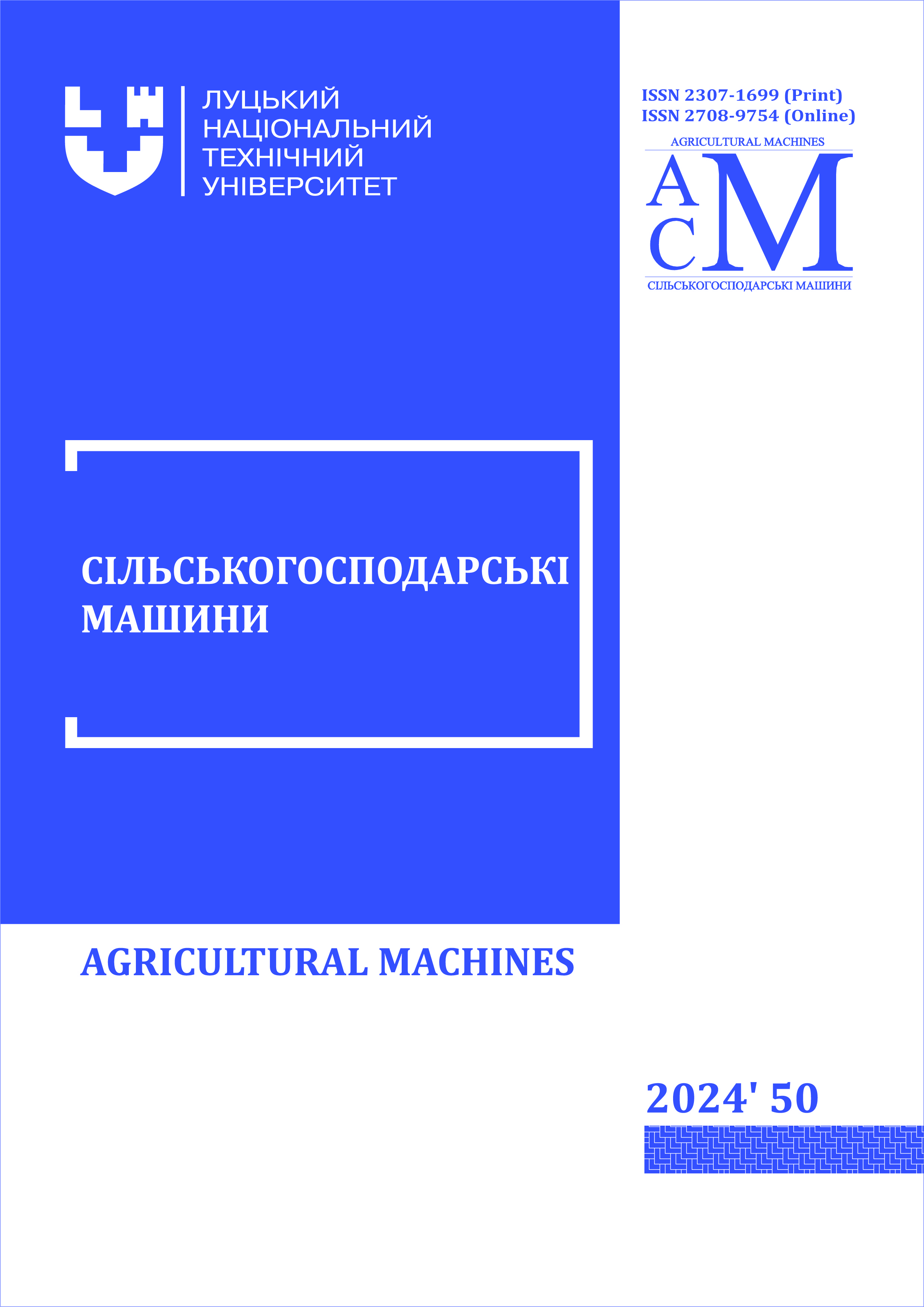РОЗРОБЛЕННЯ КЛАСИФІКАЦІЇ СІЛЬСЬКОГОСПОДАРСЬКИХ РОБОТІВ
DOI:
https://doi.org/10.36910/acm.vi50.1384Ключові слова:
сільське господарство, робот, параметри робота, класифікація роботів, сільськогосподарські роботиАнотація
Запровадження стійких методів ведення сільського господарства, моніторингу стану ґрунтів та рослин відбувається шляхом оптимізації управління виробництвом, впровадження цифрових технологій, а також інноваційних конструкторських та технологічних рішень. Важливу роль у цьому процесі відіграють сільськогосподарські роботи та автоматизовані технології, які дозволяють проводити моніторинг та прогнозування робіт, зменшити собівартість готової продукції, покращити її якісні показники, вирішити проблеми з кадрами та зменшити екологічне навантаження. Виробники техніки, які займаються сільськогосподарською робототехнікою, пропонують рішення для різних галузей, зокрема, для рослинництва та тваринництва. Відповідно до конкретного сільськогосподарського завдання робот має конструктивні, кінематичні та енергетичні особливості. Не зважаючи на різні конструкції роботів дотепер немає розробленої класифікації сільськогосподарських роботів, яких поділяють лише на групи за типом та застосуванням. У статті викладено результати аналізу різних моделей сільськогосподарських роботів. Аналіз зведено до ознак, за якими можуть бути класифіковані роботи, що працюють у сільському господарстві. З цією метою було проведене фокусоване інтерв’ю, що дозволило визначити найбільш суттєві класифікаційні ознаки, спираючись на які можна було б обґрунтовувати вибір робота для конкретного сільськогосподарського виробництва з урахуванням його потреб. Під час дослідження отримано інформацію, яка була покладена в основу розроблення класифікації роботів. Основними ознаками, які запропонували фокус-групи для покладання в основу класифікації, були: галузь застосування, ступінь спеціалізації, тип приводу, тип рушія, система керування. Також авторами статті запропоновані ознаки: вид виробництва, маса робота, мобільність, джерело енергії, тип виконання роботи, тривалість роботи без заряджання.
Посилання
Bechar, A., Nof, S. Y., & Wachs, J. P. (2015). A review and framework of laser-based collaboration support. Annual Reviews in Control, 39, 30-45. https://doi.org/10.1016/j.arcontrol.2015.03.003
Billingsley, J., Visala, A., & Dunn, M. (2008). Robotics in agriculture and forestry. Springer Handbook of Robotics, 10, 1065-1077. https://doi.org/10.1007/978-3-540-30301-5_47
Exactitude Consultancy (2024a). Agriculture robots market overview. Retrieved May 2, 2024, from https://exactitudeconsultancy.com/reports/40784/agriculture-robots-market/
Exactitude Consultancy. (2024b). Agriculture drones and robots market overview. Retrieved May 2, 2024, from https://exactitudeconsultancy.com/reports/40911/agriculture-drones-and-robots-market/
Gil, G., Casagrande, D., Cortes, L. P., & Verschae, R. (2023). Why the low adoption of robotics in the farms? Challenges for the establishment of commercial agricultural robots. Smart Agricultural Technology, 3, 100069. https://doi.org/10.1016/j.atech.2022.100069
Li, K., Huo, Y., Liu, Y., Shi, Y., He, Z., & Cui, Y. (2022). Design of a lightweight robotic arm for kiwifruit pollination. Computers and Electronics in Agriculture, 198, 107-114. https://doi.org/10.1016/j.compag.2022.107114
Merton, R. K., Fiske, M., & Kendall, P. L. (1990). The focused interview: A manual of problems and procedures (2nd ed.). Free Press.
Nasirahmadi, A., & Hensel, O. (2022). Toward the next generation of digitalization in agriculture based on digital twin paradigm. Sensors, 22(2), 498. https://doi.org/10.3390/s22020498
Williams, H., Smith, D., Shahabi, J., & Gee, T. (2023). Modelling wine grapevines for autonomous robotic cane pruning. Biosystems Engineering, 235, 31-49. https://doi.org/10.1016/j.biosystemseng.2023.09.006
Кучмійова, Т. С., Мороз, Т. О., & Шешунова, А. В. (2023). Використання штучного інтелекту в сільському господарстві. Modern Economics, 39, 69-74. https://modecon.mnau.edu.ua
Солона, О. В. (2020). Застосування сучасних мехатронних систем та роботизованих комплексів у АПК України (Application of modern mechatronic systems and robotic complexes in the agricultural industry of Ukraine). Техніка, енергетика, транспорт АПК, 3(110), 71-76.
Стельмах, І. В., & Приймак, Б. І. (2022). Безпілотні електротрактори стають сьогоденням фермерських господарств (Unmanned electric tractors are becoming the present of farms). Сучасні проблеми електроенерготехніки та автоматики, 283-285.











